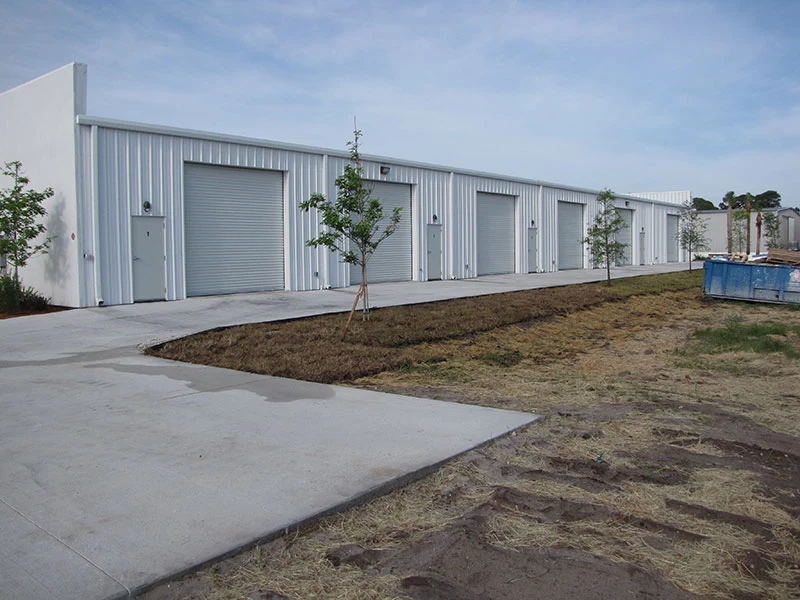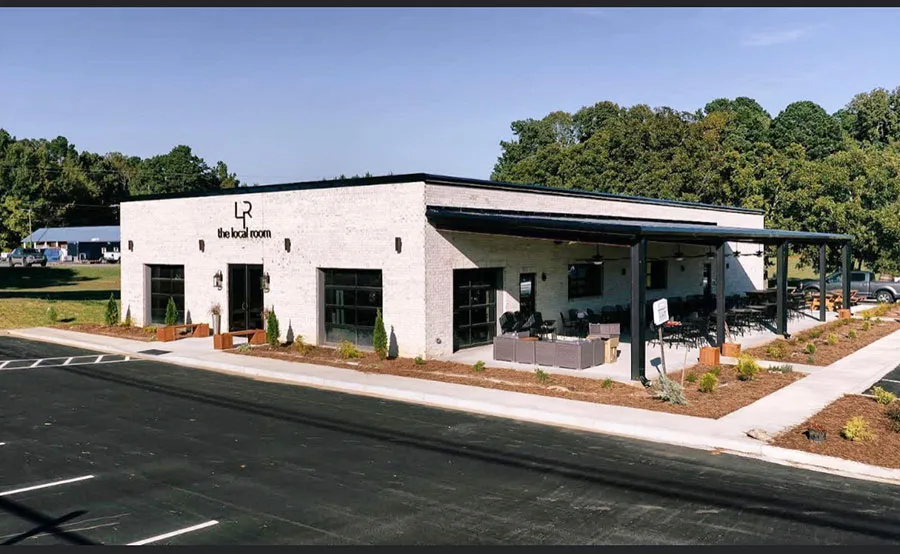In a world where longevity and resilience are paramount, the allure of metal buildings has grown steadily. At Champion Buildings, our experts in prefabricated metal buildings understand the remarkable staying power of steel structures. Join us as we shed light on why metal garages, metal commercial buildings, metal agricultural structures, and other metal buildings have become the go-to choice for those who seek structures designed to withstand the test of time.
Advantages of Metal over Traditional Materials
A fundamental shift in the construction industry has shown the superiority of metal as a building material, outshining conventional choices like wood and concrete. In the realm of durability, longevity, and adaptability, installing a steel building has emerged as an unrivaled contender, revolutionizing the way we approach architectural construction. Let’s take a closer look at why steel construction materials offer a number of benefits over concrete or wood.
Exceptional Durability
One of the foremost advantages of structural steel lies in its inherent durability. Unlike wood framing, which can be susceptible to rot, pests, and decay, steel framing is less prone to such vulnerabilities. From termite protection to protection against natural disasters or weather-related events, cold-formed steel buildings offer exceptional durability for a number of commercial buildings such as metal self-storage units, as well as for garages, steel workshops, or metal structures on your residential property.
Longevity
Metal buildings boast a remarkable lifespan that often surpasses that of their wooden or concrete counterparts. The combination of sturdy materials and advanced engineering techniques ensures that metal structures can withstand years of wear and tear without compromising their integrity. This keeps your maintenance costs down while avoiding moisture-related issues, corrosion, or structure deterioration that other structures made from wood or concrete might experience over time.
Minimal Maintenance
The durability of metal translates into reduced maintenance requirements. Unlike wood, which demands regular treatments to preserve its quality, and concrete, which can require extensive repairs, metal buildings are relatively low-maintenance. This not only saves time but also reduces long-term costs related to your steel structure.
Design Flexibility and Customization
Metal’s remarkable malleability and strength lend themselves to creative design possibilities that often surpass the capabilities of wood and concrete. Architects and engineers can leverage metal’s versatility to create intricate and innovative structures that would be challenging or impossible to achieve with other materials. Unlike wood, which may have limitations in terms of load-bearing capacities and spanning capabilities, and concrete, which can be challenging to shape into intricate forms, metal offers the freedom to craft unique architectural features.
Sustainability and Recyclability
In an era where sustainable building practices are gaining momentum, metal shines as an environmentally responsible choice. Unlike traditional materials that may require significant natural resource extraction, metal can be recycled and repurposed, reducing the need for new raw materials. When it comes to energy-efficient, easily recycled, sustainable materials, metals have the advantage over wood and concrete.
High Tensile Strength and Load-Bearing Capacity of Metal
Metal’s innate strength lies in its exceptional tensile strength and load-bearing capacity. Tensile strength refers to a material’s ability to withstand pulling forces without breaking. Metal excels in this aspect, making it well-suited for constructing buildings that can support heavy loads and endure dynamic stresses.
Tensile Strength
Metal, particularly steel, possesses a remarkable tensile strength that allows it to resist stretching or deformation under tension. This characteristic is pivotal in scenarios where a building might experience external forces such as high winds, earthquakes, or snow accumulation.
Load-Bearing Capacity
Metal’s robust load-bearing capacity allows architects and engineers to design structures with larger spans and open layouts. This flexibility in design enhances the functionality of the metal building while maintaining structural integrity.
Resistance to External Forces
The natural elements pose significant challenges to the longevity of any building. Metal, however, demonstrates exceptional resistance to these forces, making it an ideal choice for structures that need to withstand a range of environmental conditions.
- Wind Resistance: Metal buildings are designed to be aerodynamic, allowing them to effectively disperse the force of strong winds. This quality is particularly crucial in regions prone to hurricanes or severe storms.
- Snow Loads: The load-bearing capacity of metal extends to heavy snow accumulation. Metal roofs, for instance, have a sloped design that prevents snow from accumulating, reducing the risk of roof collapse.
- Earthquake Resilience: Metal’s flexibility and ability to absorb energy make it an excellent choice for earthquake-prone areas. The material’s capacity to sway and absorb shocks helps minimize damage during seismic events.
- Fire Resistance: Metal’s resistance to fire is a key advantage over wood. While wood is flammable and concrete can spall under intense heat, metal maintains its structural integrity even when exposed to high temperatures, making it a safer choice for fire-prone regions.
Factors Contributing to Durability
The exceptional durability of metal buildings isn’t merely a product of chance– it’s the result of careful consideration, advanced engineering, and precise execution.
High-Grade Steel and Metal Alloys
At the core of a durable metal building lies the choice of materials. High-grade steel and specialized metal alloys are the building blocks that elevate metal structures above the rest. These materials possess inherent strength and resilience, ensuring that the structure can withstand various external stresses without succumbing to deformation or compromise. By utilizing superior materials, erecting a metal building achieves a level of toughness that sets it apart from constructions made from traditional materials like wood or concrete.
Corrosion-Resistant Coatings
Metal buildings are not immune to the effects of corrosion, especially in environments with high moisture levels or exposure to chemicals. To combat this challenge, corrosion-resistant coatings are applied to the metal surfaces. These coatings act as protective barriers, shielding the metal from rust, decay, and deterioration. By fortifying the metal against the elements, these coatings play a crucial role in extending the lifespan of the building and maintaining its structural integrity over time.
Precision in Design and Fabrication
The durability of a metal building starts with meticulous engineering and design. Advanced software and cutting-edge techniques allow architects and engineers to create precise blueprints that optimize structural strength and integrity. Every component, from beams to joints, is calculated and engineered to withstand the forces the building might encounter throughout its life. This precision ensures that the final structure is not only robust but also efficient in its use of materials.
Customization for Various Purposes
Metal’s versatility extends beyond its physical properties. It also allows for unparalleled customization, enabling architects and builders to tailor structures to specific needs. Whether it’s a warehouse, an agricultural facility, an office space, or a retail establishment, metal buildings can be designed to accommodate a wide range of purposes. This adaptability ensures that each structure is optimized for its intended use, enhancing its longevity and relevance.
Prefabrication and Efficient Assembly Processes
Metal buildings benefit from prefabrication, a process where components are manufactured off-site in controlled environments. This approach ensures that each part is precisely crafted to fit together seamlessly during assembly. Prefabrication minimizes errors, reduces waste, and accelerates construction timelines. The result is a building that is not only sturdy but also assembled with remarkable accuracy, enhancing its durability from the very foundation.
Reduction of On-Site Construction Time
Traditional construction methods can expose buildings to the elements for prolonged periods, leading to potential weather-related damage. Metal buildings, with their efficient construction processes, significantly reduce on-site construction time. This reduction minimizes the exposure of the building components to adverse weather conditions, safeguarding the structural integrity and contributing to its long-term durability.
Contact Champion Buildings Today for Durable Steel Buildings
Are you ready to invest in a structure that’s built to withstand the test of time? The remarkable durability of prefabricated metal buildings isn’t a coincidence– it’s the result of a meticulous approach to construction that prioritizes strength, resilience, and adaptability. If you’re seeking a construction solution that goes beyond the ordinary, consider the advantages of metal buildings from Champion Buildings for your next project.
Contact our experts in steel buildings by calling us at (800) 942-6812 or filling out the form below to get started.


